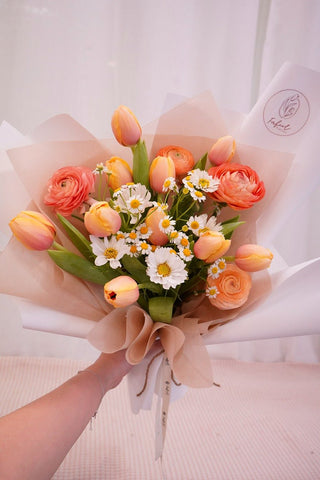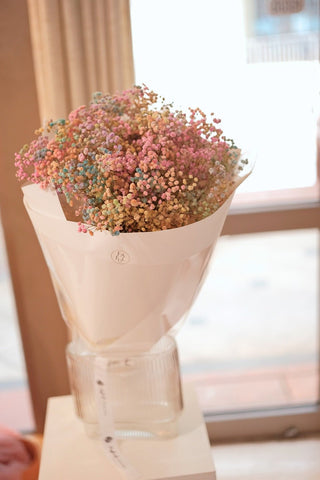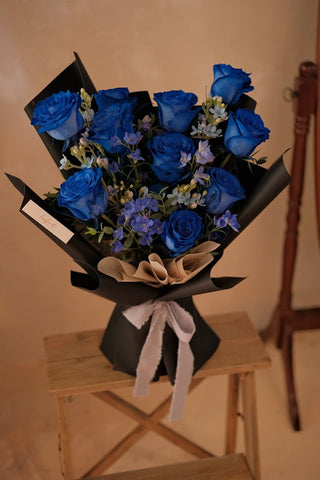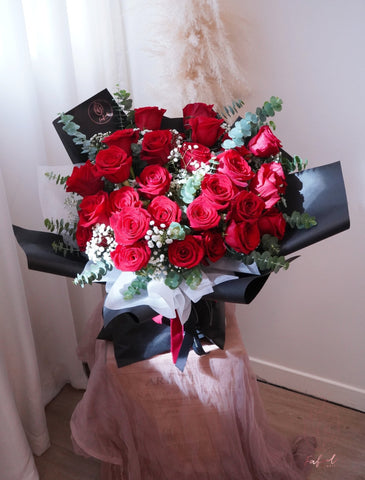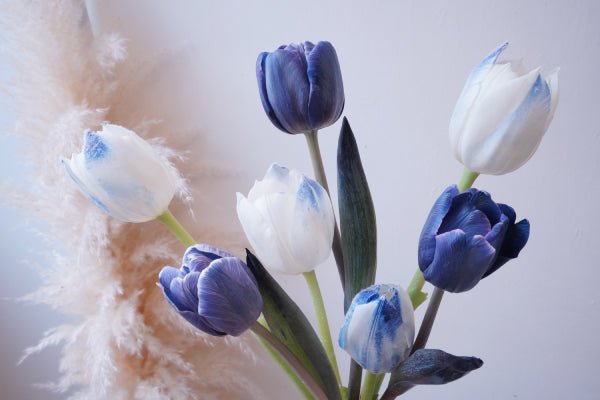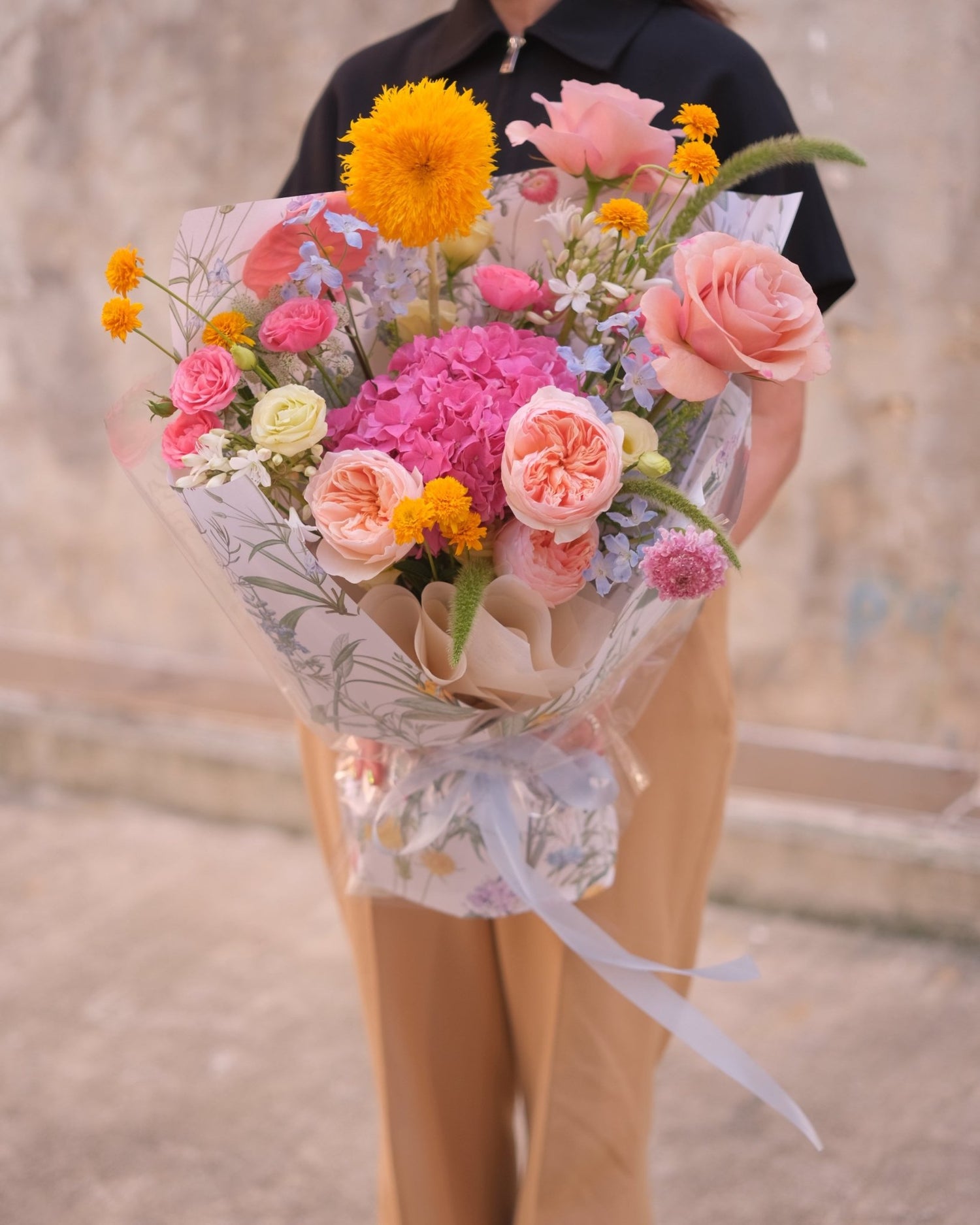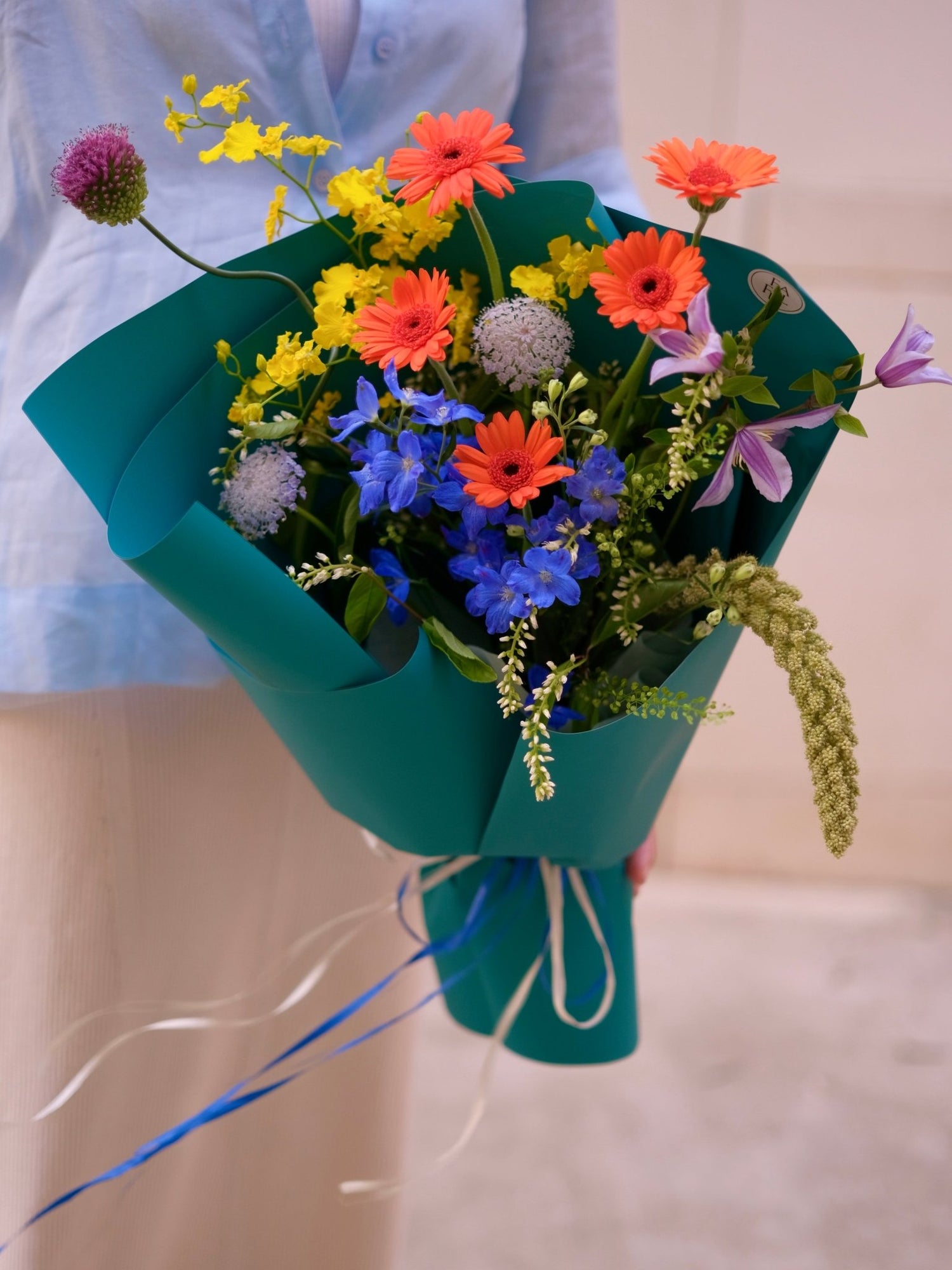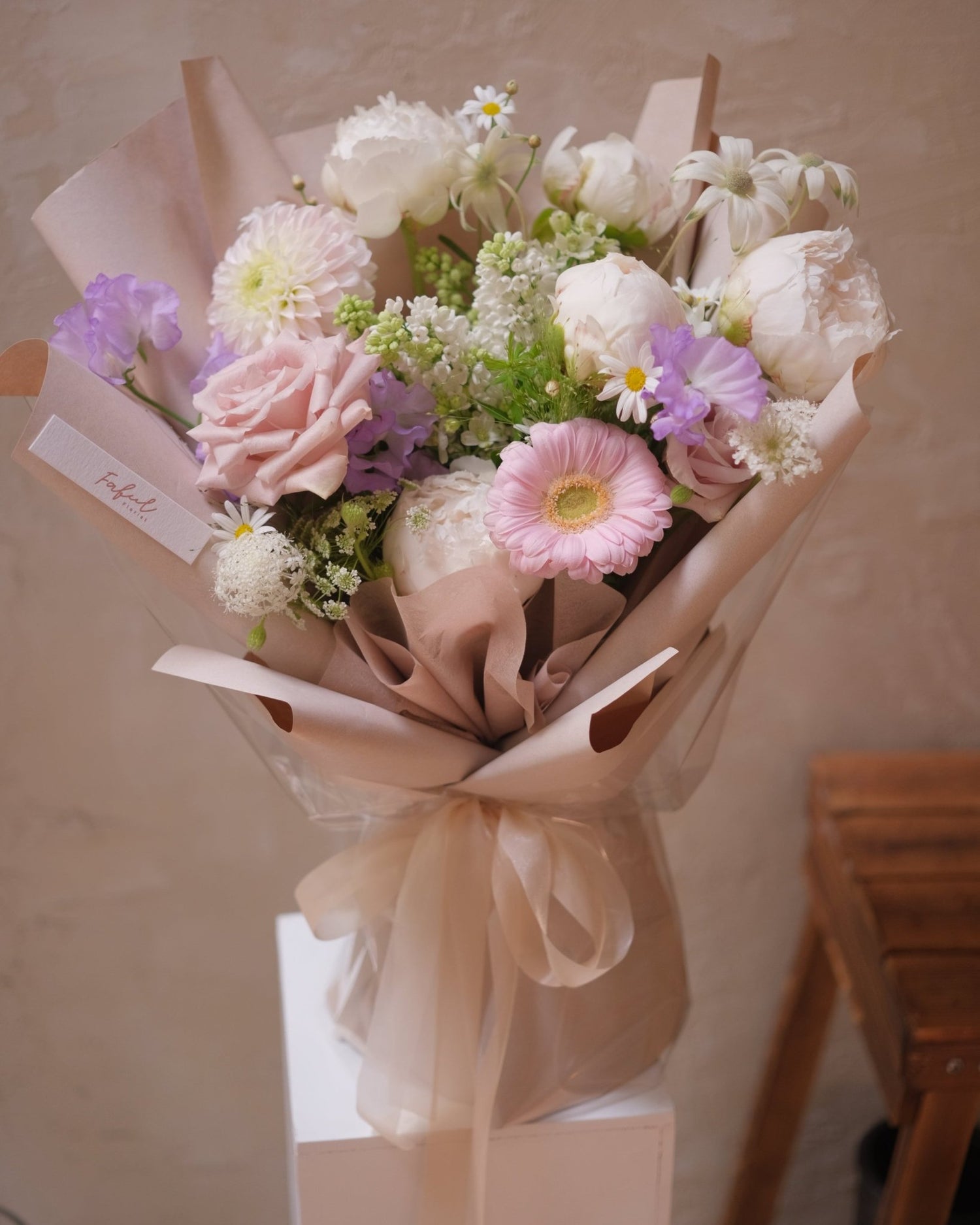
Floriography - Flower Meaning that Blow Your Mind: Secrets of Flowers
⏱️ Estimated Reading Time: 8 minutes | 📅 Last Updated: 2026
Table of Contents
- The Meaning and Importance of Flower Meaning
- Origins and Symbolism of Flower Meaning
- The Evolution of Flower Meaning in Culture
- Flower Meanings and Symbolism of Common Flowers
- Complete Guide to Flower Meanings for Different Occasions
- Application of Flower Meaning in Literature and Art
- Romantic Stories Behind Flower Meanings
- Application of Flower Meaning in Business and Marketing
- Psychological Interpretation of Flower Meaning
- Considerations When Choosing Flowers
- Conclusion
💐 Flower Meaning Quick Reference Guide
| Flower Type | Core Meaning | Recommended Series |
|---|---|---|
| Rose | Love, Passion, Beauty | Rose Bouquet Series |
| Sunflower | Loyalty, Hope, Sunshine | Sunflower Series |
| Tulip | Confession of Love, Beauty | Tulip Series |
The Meaning and Importance of Flower Meaning
Flower meaning, also known as the symbolic significance represented by flowers, originates from ancient cultures and legends. From ancient times to the present, flower meaning has played an important role in human culture, becoming a way for people to express emotions. The development of flower meaning varies across different cultures, from the Victorian era in the West to traditional flowers in the East, where every flower has its unique symbolic significance. Faful Florist has compiled this complete guide to flower meaning, hoping that by understanding the symbolism of flowers, we can better express our inner emotions and let flowers become a carrier of our sentiments.
Why is flower meaning so important when giving gifts? Every choice of flower is actually conveying a message. Through flower meaning, we can enhance the expression of emotions, making the gift not just an external decoration but a sentiment full of deep meaning. Whether it is love, friendship, or blessings, the symbolic significance of flowers can help us convey the most sincere emotions without words.

Origins and Symbolism of Flower Meaning
Origins of Flower Meaning
The sources of flower meaning are very rich, and much of the symbolism of flowers comes from legends and historical backgrounds in different cultures. In Western culture, flower meaning mainly originates from ancient Greek and Roman mythology, where many flowers are related to concepts such as love and deities. In Eastern culture, the meaning of flowers is closely linked to morality, family, and social values. For example, the peony symbolizes prosperity and glory in Chinese culture.
Colors and Types of Flowers
The color and type of flowers also play an important role in flower meaning. Different colored flowers have different implications; for instance, red symbolizes passion, while white symbolizes purity. The type of flower is equally important; for example, the rose symbolizes love, and the sunflower symbolizes loyalty and hope. Therefore, when choosing flowers, one should select the appropriate flower symbolism based on color and type, so as to accurately convey the intended emotion.

The Evolution of Flower Meaning in Culture
Flower meaning is not static; it evolves constantly with time and cultural background. Understanding the historical context of flower meaning allows us to feel its significance more profoundly.
In ancient Egypt, the lotus was seen as a symbol of rebirth and regeneration because it blooms from the mud, often appearing in religious ceremonies to symbolize the cycle of life.
💡 Flower Meaning Trivia
In ancient Greek and Roman mythology, flowers were closely connected to deities and emotional stories, such as the legend of the rose and the goddess of love, Venus. It is said that Venus's tears and Adonis's blood dripped onto the ground and turned into red roses, becoming a symbol of immortal love.
In medieval Europe, flower meaning carried strong religious colors; for example, the lily represented the purity of the Virgin Mary and was common in church art. By the Renaissance, poets and artists began using flower meaning to express complex emotions such as love, loyalty, and loss; the English poet John Donne used flowers as metaphors for the fragility and beauty of love.
In modern times, with globalization, Eastern and Western flower meanings have gradually merged. For example, the peony is hailed as the "flower of riches and honor" in China, symbolizing prosperity and glory, and has since spread internationally to become a universal symbol of prosperity. This cross-cultural exchange has made flower meaning a bridge of communication across languages and regions. Today, flower meaning is an important way to express emotions all over the world, allowing people to convey deeper meaning when sending flowers.
Flower Meanings and Symbolism of Common Flowers
Here are the flower meanings and symbolic significance of common flowers. Each flower has its unique symbolism and can convey special messages on different occasions:
-
Rose Meaning: Love and beauty. Red roses symbolize deep love and passion, while white roses symbolize purity and flawlessness. Suitable for giving on Valentine's Day or when confessing love. However, note that the flower meaning of yellow roses varies by culture. In Western culture, yellow roses usually symbolize friendship, joy, and good wishes, suitable for friends; but in a romantic context, they may represent lost love. In Eastern cultures (such as China), yellow flowers sometimes symbolize dignity and wealth. Therefore, when sending yellow roses, one should choose carefully based on the specific situation and the recipient's cultural background.
-
Sunflower Meaning: Loyalty and hope. It always grows towards the sun, symbolizing loyalty and a positive spirit, suitable for giving to friends or graduates.
- Tulip Meaning: Love and beauty. Red tulips represent passionate love, while white tulips symbolize pure love. Suitable for expressing love or congratulating a new beginning.
-
Carnation Meaning: Love and gratitude. Pink carnations represent motherly love, while red carnations symbolize passion, suitable for giving on Mother's Day or when thanking elders.
-
Lisianthus (Eustoma) Meaning: Eternal love. The flower meaning of Lisianthus varies by culture. In Japanese culture, Lisianthus symbolizes unchanging love and honesty; while in Chinese culture, it often represents hope and endless love. Therefore, when giving Lisianthus, one should consider the recipient's cultural background to ensure the correct emotion is conveyed.

-
Lily Meaning: Purity and elegance. White lilies symbolize purity and selfless love, suitable for use in weddings or blessings for newborns.
-
Hydrangea Meaning: Happiness and unity. Hydrangeas symbolize happiness and harmony, making them especially suitable for giving at family gatherings or weddings. Different colored hydrangeas have different symbolic meanings.
- Lavender Meaning: Calmness and longing. Lavender symbolizes longing and peace, suitable for giving to friends you haven't seen for a long time or distant relatives.
- Calla Lily Meaning: Purity, magnificent beauty
- Lavender Meaning: Waiting for love, longing
-
Gardenia Meaning: Eternal love and agreement, silent waiting and persistence
- Dandelion Meaning: Praying for your happiness from afar
- Kapok Meaning: Cherish the people around you
- Hyacinth Meaning: Hyacinth flower meaning varies by color, generally symbolizing joy and life, bringing a positive and uplifting feeling. Specifically, blue hyacinths symbolize constancy, purple hyacinths symbolize apology, and white hyacinths symbolize pure love. Additionally, it represents "reborn love" and "eternal remembrance," so care must be taken regarding its multiple meanings when giving.
-
Orchid Meaning: Elegance, noble posture, courage to overcome difficulties
-
Baby's Breath Meaning: Purity, innocence
- Cherry Blossom Meaning: Pale, pure
-
Forget-Me-Not Meaning: True love, loyalty, and longing
- Daisy Meaning: Pure beauty, innocence
-
Azalea Meaning: Temperance, satisfaction, happiness of being loved by you

-
Iris Meaning: Symbol of hope, faith, and wisdom
-
Chrysanthemum Meaning: Noble character and integrity, longevity and auspiciousness
-
Peony Meaning: Wealth and auspiciousness, dignified promise

Each flower has its unique meaning. Choosing the appropriate flower meaning can help us convey the emotions in our hearts on different occasions.
Colors and Symbolic Meanings of Tulips
- White Tulip: Symbolizes purity and a new beginning, suitable for giving to someone starting a new life.
- Red Tulip: Represents passionate love and confession, the best choice for expressing love.
Colors and Representative Meanings of Roses
-
Red Rose Meaning: Deep love and passion, suitable for use in romantic occasions.
-
White Rose Meaning: Purity and respect, suitable for use in weddings or formal occasions.
The color of flowers has different applicability in different occasions. Choosing the correct color can make the bouquet more consistent with the purpose of the gift.

Complete Guide to Flower Meanings for Different Occasions
In different occasions, we should choose suitable flowers according to the symbolism of flowers to better convey the emotions in our hearts.
- Birthday: Birthdays are days full of joy; you can choose flowers symbolizing happiness and hope, such as sunflowers or lilies, to wish the other person a happy life.
- Graduation Ceremony: Graduation is an important milestone in life; sending sunflowers or carnations symbolizes a positive attitude and blessings for the future. Sunflowers symbolize loyalty and hope, representing blessings for graduates, hoping they will face the sunshine and face the future positively like the flower.
- Mother's Day: Mother's Day is suitable for choosing pink carnations, symbolizing motherly love and gratitude, letting mothers feel love and warmth. Carnations are the representative flower of Mother's Day, and pink symbolizes the selflessness and depth of motherly love.
- Valentine's Day: Valentine's Day is a day to express love; red roses are the most common choice, symbolizing passionate love and deep emotions.
- Mourning Occasions: In mourning occasions, white chrysanthemums symbolize mourning and longing, being the best choice for respect and remembrance of the deceased; this is very common in Hong Kong and is suitable for mourning and memorial occasions.
- Family Gatherings: Hydrangeas symbolize happiness and unity, making them an ideal choice for family gatherings, capable of bringing an atmosphere of happiness and harmony.
Application of Flower Meaning in Literature and Art
Flower meaning is not limited to daily gift-giving; it also has a profound influence in literature and art, adding layers of romance and symbolism to flowers.
In Shakespeare's "Hamlet," Ophelia distributes flowers, each carrying a specific emotion; for example, rosemary symbolizes remembrance, and daisies represent innocence. This technique deepens the emotional impact of the plot. In classical Chinese literature, plum blossoms are often used to symbolize resilience and nobility, as in Wang Anshi's lines "From afar I know it is not snow, for a faint fragrance comes," showcasing the unique charm of plum blossoms in the cold winter.
In the field of art, Van Gogh's "Sunflowers" interprets vitality and hope with bright colors; sunflowers are not only the visual focus but have also become a classic symbol of flower meaning in art history. In traditional Chinese painting, peonies are often depicted as representatives of wealth and prosperity, embodying the cultural significance of flower meaning.
In modern media, flower meaning is equally ubiquitous; for example, red roses often appear in romantic plots in movies, symbolizing passionate love; white lilies are common in wedding scenes, representing purity and blessings. These visual elements continue the tradition of flower meaning, giving it appeal in contemporary society. Whether in literature or art, flower meaning endows flowers with significance beyond the surface, becoming a carrier of human emotions, allowing people to feel a deeper resonance while appreciating them.
Romantic Stories Behind Flower Meanings
The symbolic meanings of many flowers have moving stories behind them, making the flowers themselves more romantic and emotional.
- Love Story of Roses: It is considered a symbol of love, originating from the story of the goddess of love, Venus, in ancient Greek mythology. Legend has it that Venus's tears and the blood of her beloved Adonis dripped onto the ground together, turning into red roses, symbolizing immortal love.
- Legend and Symbolism of Lisianthus: Lisianthus has a moving legend in Japan. A girl named Kikyo waited for her lover until the end of her life. This faithful love made Lisianthus a symbol of eternal love.
- Story of the Sunflower: In Greek mythology, Clytie fell in love with the sun god Apollo, but her love was not requited. Eventually, she turned into a sunflower, forever following the direction of the sun, symbolizing unregretted loyalty and love.

Application of Flower Meaning in Business and Marketing
Flower meaning is not only a tool for emotional expression but is also widely used in modern business and marketing strategies, becoming a bridge between brands and consumers.
Chanel uses the camellia as its brand logo because it symbolizes elegance and purity, perfectly fitting the brand's high-end image. The "ideal love" flower meaning of the camellia adds romantic appeal, successfully attracting consumers.
In holiday promotions, flower meaning also plays an important role. For example, on Valentine's Day, merchants heavily promote red roses, emphasizing their symbolism of love to stimulate a buying frenzy; Mother's Day features pink carnations, representing gratitude for motherly love, making flowers an indispensable element of the holiday.
In advertising, flower meaning is also cleverly used. For example, lavender often appears in the promotion of soothing products due to its flower meaning of tranquility; sunflowers symbolize vitality and are common in health food advertisements. This combination of visuals and emotions allows flower meaning to not only enhance brand appeal but also deepen consumers' impressions of products. Florists and retailers use flower meaning marketing to not only increase sales but also make consumers more purposeful when choosing flowers. The application of flower meaning in business proves that it is not only a heritage of traditional culture but also a practical tool for emotional communication in modern society.

Psychological Interpretation of Flower Meaning
The reason why flower meaning can touch people's hearts is supported by psychological principles, making flowers a powerful medium for emotional expression.
Color psychology shows that red flowers like red roses can stimulate passion and vitality because they stimulate heart rate and blood pressure, often linked to love; white flowers like white lilies bring calm and comfort, helping to relax the mood, which explains how different flower colors convey different emotions.
Symbolism suggests that flowers act as symbols carrying human emotional projection; for example, sunflowers symbolize hope and can stimulate positive emotions, making people feel uplifted; plum blossoms represent resilience, often reminding people of strength in adversity.
Emotional connection is another key to flower meaning. Research has found that receiving a bouquet that matches one's sentiments can enhance happiness because the visual and olfactory stimulation of flowers can relieve stress and evoke beautiful memories. For example, receiving red roses may make people recall romantic moments, while the scent of lavender brings a feeling of tranquility. This psychological effect makes flower meaning more significant in interpersonal interaction, making sending flowers not just a gift but a deep emotional exchange. The psychological basis of flower meaning allows people to find the most suitable way of expression when choosing flowers.
Considerations When Choosing Flowers
When choosing a bouquet, it is very important to understand the symbolic meaning of flowers and choose suitable flowers according to different situations.
- Choose different bouquets according to the recipient: When sending flowers, you should choose flowers based on the recipient. For example, sending red roses to a lover expresses deep love, while sending yellow roses to a friend expresses friendship.
- Pay attention to bouquet combination and color: Matching different colored flowers together may convey different messages. For example, the combination of red roses and white roses represents purity and loyalty in love.
- Avoid choosing the wrong flowers in various situations: For example, avoid using yellow roses when giving to a lover, as in some cultures it symbolizes breaking up or infidelity; in mourning occasions, white chrysanthemums, white lilies, or white roses can be chosen, all representing mourning and longing, suitable for expressing respect for the deceased; and when giving to a mother, pink carnations are most suitable, symbolizing gratitude and love.

Conclusion
Flower meaning, as a way of expressing emotions, still plays an important role in our lives today. From ancient times to the present, the symbolic meaning of flowers is not only a cultural symbol but also a medium for people to transmit their inner emotions. In modern society, the application of flower symbolism remains extensive; whether in weddings, birthdays, or other special occasions, choosing the appropriate flower meaning can make the gift more meaningful.
Readers are encouraged to pay more attention to the choice of flower meaning when sending flowers, conveying deeper emotions through the symbolic meaning of flowers. Let sending flowers be not just an action, but an exchange of emotions, a transmission of sentiments. Hope that every bouquet can bring joy, emotion, and beautiful memories.
| Flower | Meaning and Symbolism |
|---|---|
| Rose | Love, beauty; Red rose: Deep love, passion; White rose: Purity, flawlessness; Yellow rose: Friendship (West) or dignity, wealth (East, may represent lost love in romance) |
| Sunflower | Loyalty, hope; Symbolizes positivity, suitable for friends or graduates |
| Tulip | Love, beauty; Red: Passionate love; White: Pure love, suitable for expressing love or new beginnings |
| Carnation | Love, gratitude; Pink: Motherly love; Red: Passion, suitable for Mother's Day or thanking elders |
| Lisianthus | Eternal love; Japan: Unchanging love, honesty; China: Hope, endless love |
| Lily | Purity, elegance; White lily: Purity, selfless love, suitable for weddings or blessings for newborns |
| Hydrangea | Happiness, unity; Symbolizes happiness and harmony, suitable for family gatherings or weddings |
| Lavender | Calmness, longing; Suitable for friends not seen for a long time or distant relatives |
| Calla Lily | Purity, magnificent beauty |
| Gardenia | Eternal love and agreement, silent waiting and persistence |
| Dandelion | Praying for happiness from afar |
| Kapok | Cherish the people around you |
| Hyacinth | Joy, life; Blue: Constancy; Purple: Apology; White: Pure love; Represents reborn love, eternal remembrance |
| Orchid | Elegance, noble posture, courage to overcome difficulties |
| Baby's Breath | Purity, innocence |
| Cherry Blossom | Pale, pure |
| Forget-Me-Not | True love, loyalty, longing |
| Daisy | Pure beauty, innocence |
| Azalea | Temperance, satisfaction, happiness of being loved |
| Iris | Hope, faith, wisdom |
| Chrysanthemum | Noble character, integrity, longevity, auspiciousness |
| Peony | Wealth and auspiciousness, dignified promise |


